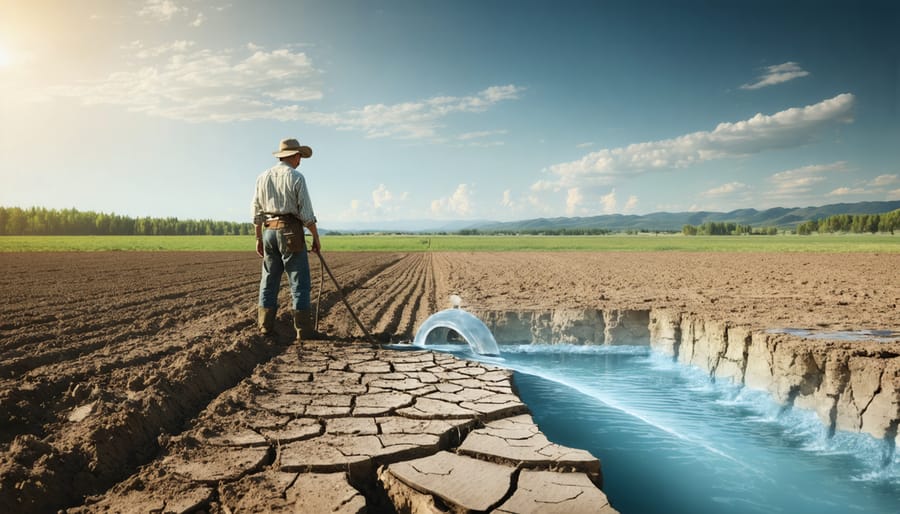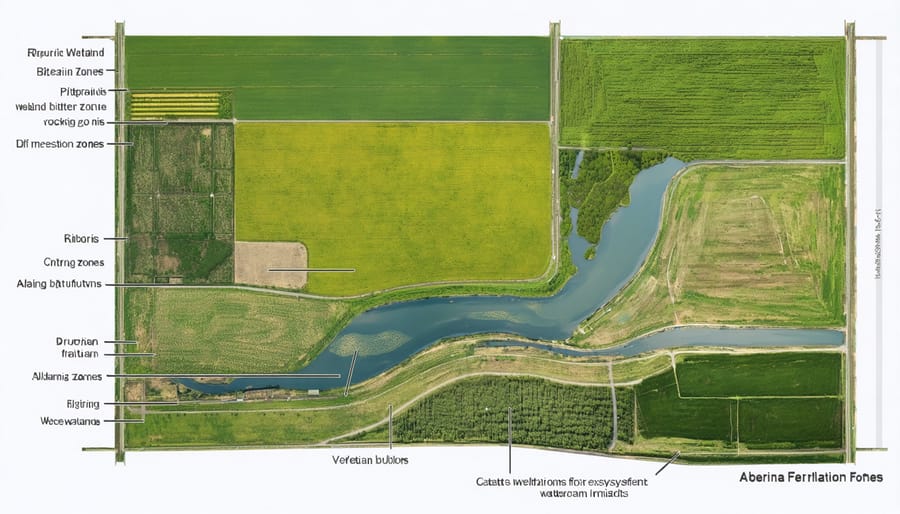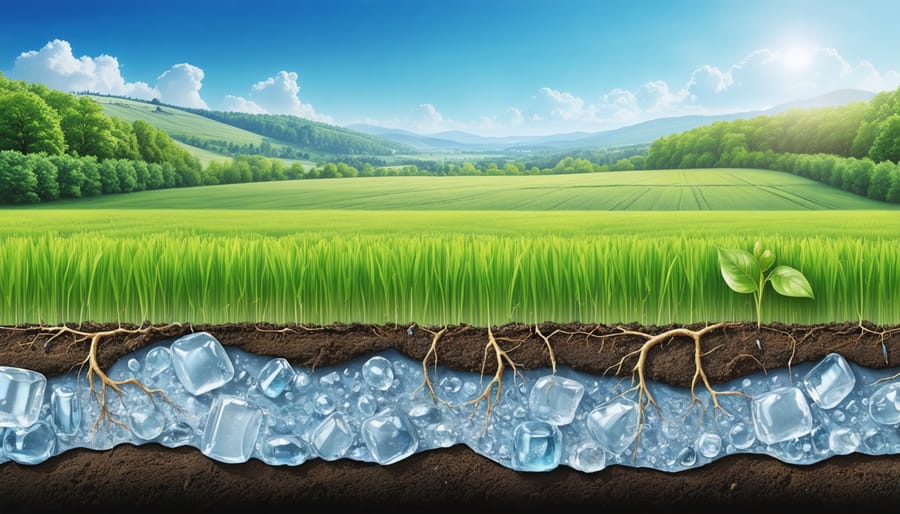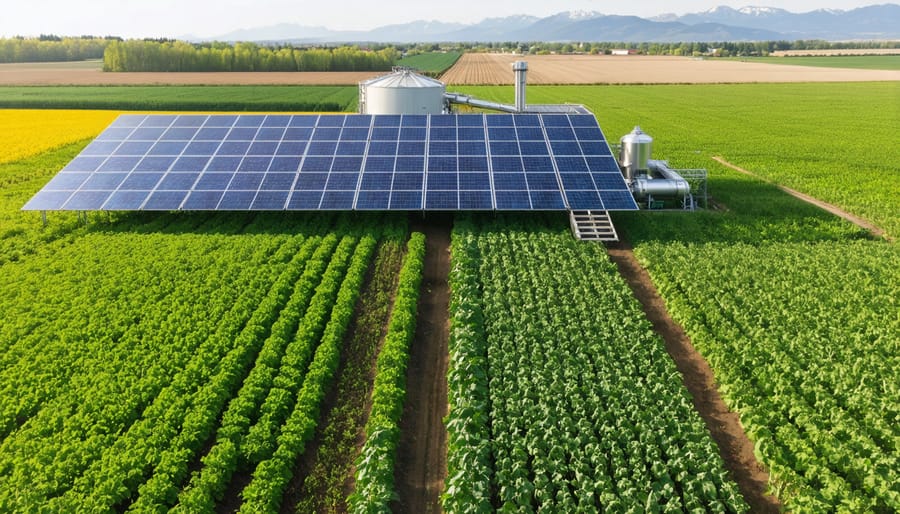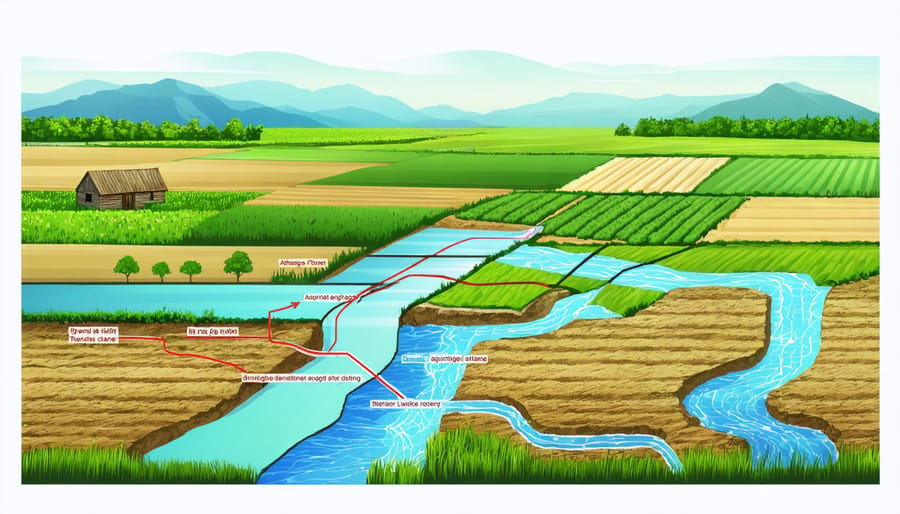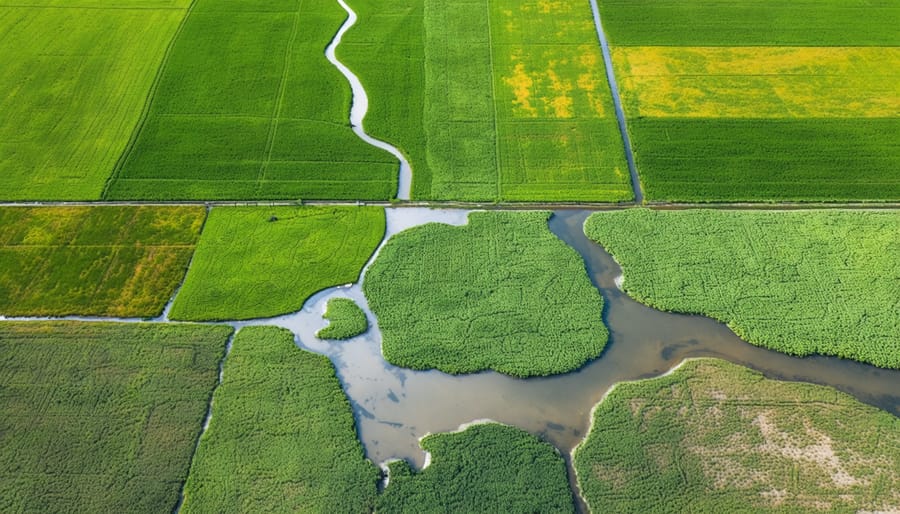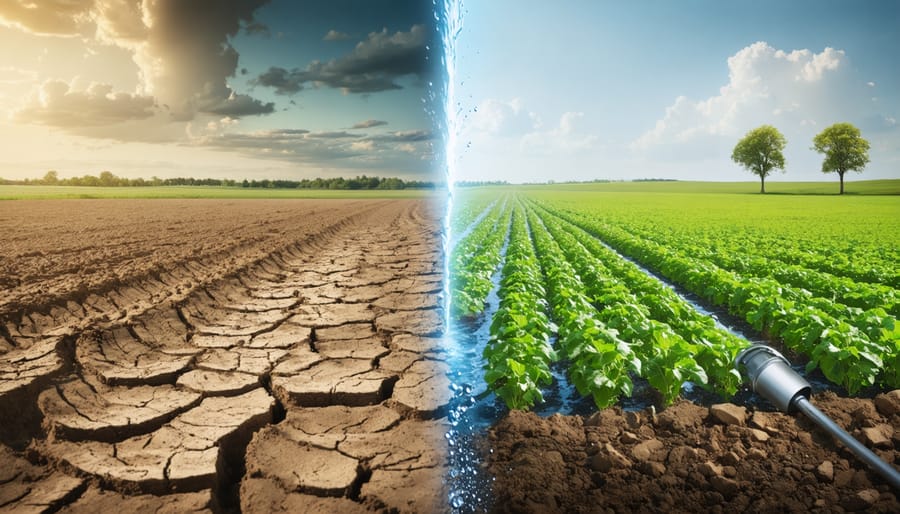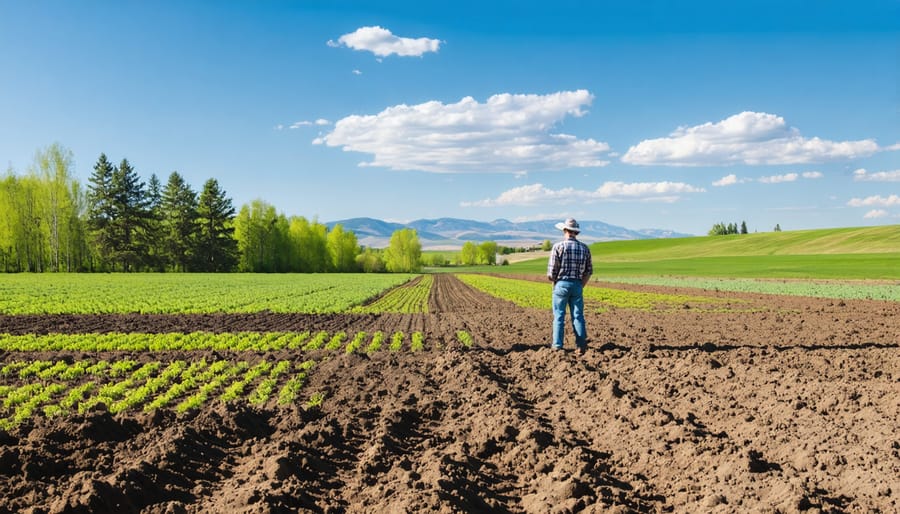Beneath Alberta’s fertile farmlands lies a critical resource that’s vanishing faster than it can naturally replenish. Groundwater depletion threatens not just our agricultural future, but the very foundation of our rural communities. Each year, Canadian aquifers lose billions of cubic meters of water, with some regions experiencing water table drops of up to 1 meter annually. For Alberta’s farmers, this isn’t just an environmental concern—it’s a direct threat to operational sustainability and generational farming legacies.
Yet this challenge also presents an opportunity for agricultural innovation and community leadership. As stewards of the land, farmers across the province are pioneering water conservation techniques that protect both their livelihoods and our shared groundwater resources. From precision irrigation systems to drought-resistant crop selection, the solutions are within reach.
The next decade will be crucial in determining whether we can reverse this trend. With collaborative effort between farmers, agricultural experts, and water management authorities, we can implement sustainable practices that ensure both productive farms and preserved aquifers for future generations. This article explores practical strategies that Alberta farmers are successfully using to address groundwater depletion while maintaining profitable operations.
Understanding Groundwater’s Role in Alberta Agriculture
Alberta’s Aquifer Network
Alberta’s vast network of aquifers forms the backbone of our agricultural water supply, with groundwater systems in Alberta ranging from shallow to deep formations. The Paskapoo Aquifer, stretching across central Alberta, serves as the primary water source for thousands of farms, while the Milk River Aquifer in the south supports crucial irrigation networks.
Current usage patterns show that agricultural operations account for approximately 30% of groundwater withdrawals in the province. Many farmers rely on these underground reservoirs for irrigation, livestock watering, and domestic use. The average farm well in Alberta draws from depths of 30 to 150 metres, accessing water that may have taken decades or even centuries to accumulate.
Recent monitoring data indicates that while some regions maintain stable water levels, others are experiencing gradual decline. The Beverly Channel, an ancient buried valley aquifer near Edmonton, exemplifies this trend with observed decreases of 0.5 metres annually in some areas. Understanding these patterns helps farmers make informed decisions about water use and conservation strategies.
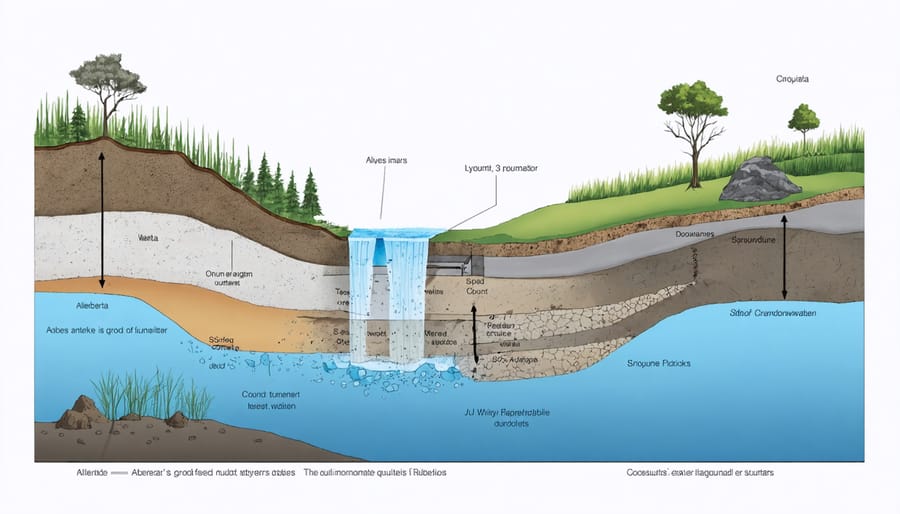
Critical Ecosystem Services at Risk
Groundwater plays a vital role in sustaining our prairie ecosystems and agricultural systems across Alberta. Natural wetlands, which support diverse wildlife and help regulate local water cycles, depend heavily on stable groundwater levels. These wetlands act as natural filters, improving water quality and providing essential habitat for pollinators that our crops rely on.
In the Medicine Hat region, farmers have noticed that decreasing groundwater levels are affecting natural springs that have historically supported native grasslands and livestock watering. These springs are also crucial for maintaining streamflow during dry periods, ensuring year-round water availability for both agricultural and ecological needs.
The root systems of native plants, particularly in riparian areas, depend on consistent groundwater levels to thrive. These plants help prevent soil erosion and maintain soil health, directly benefiting nearby agricultural lands. When groundwater levels drop, we risk losing these natural supports for our farming operations.
Many Alberta producers have observed that areas with healthy groundwater systems show better drought resilience and more stable crop yields, demonstrating how ecosystem services directly contribute to farm sustainability.
Signs of Groundwater Stress on Your Farm
Early Warning Signs
Recognizing the early signs of groundwater depletion can help protect your farm’s water resources before the situation becomes critical. For Alberta farmers, the first noticeable indicator often appears in well performance. If you’re experiencing decreased well yield or need to lower your pump depth more frequently, these could be warning signals of declining water tables.
Watch for changes in water quality, particularly increased mineral content or saltiness, which can indicate your well is drawing from deeper, more mineralized aquifers. Soil subsidence, where the ground begins to settle or sink in certain areas, can also signal excessive groundwater withdrawal.
Your irrigation system might provide early clues too. If you notice increased energy costs for pumping or longer irrigation times to achieve the same soil moisture, your groundwater supply might be under stress. Keep an eye on neighbouring springs or wetlands – their reduction or disappearance often indicates regional groundwater issues.
Local monitoring stations across Alberta track groundwater levels, and many farmers report seasonal changes becoming more pronounced. During dry periods, pay attention to how quickly your water table recovers after significant withdrawals. Slower recovery rates typically suggest declining aquifer health.
Document these observations in your farm records. This information not only helps track changes over time but can be valuable when working with local water management authorities to develop sustainable solutions.
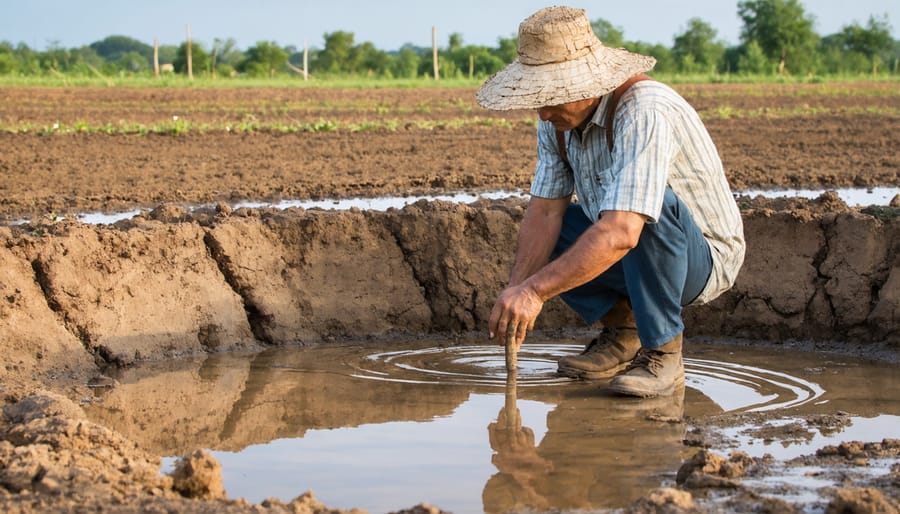
Long-term Impact Assessment
Monitoring groundwater changes requires a combination of traditional methods and modern technology that Alberta farmers can readily implement. Regular well monitoring, including depth measurements and water quality testing, provides valuable baseline data for tracking changes over time. The Alberta Groundwater Observation Well Network offers farmers access to historical data and current trends, helping them make informed decisions about their water usage.
Installing monitoring wells across your property can create a comprehensive picture of aquifer health. These wells should be strategically placed to account for topography and soil variations. Many Alberta farmers are now adopting smart sensors that provide real-time data on water levels and quality, making it easier to track changes and respond promptly to potential issues.
Understanding water infiltration and conservation patterns is crucial for long-term assessment. Keeping detailed records of rainfall, irrigation schedules, and crop water usage helps identify trends and adjust practices accordingly. The Alberta Agriculture Water Quality Information System provides additional support by offering free water testing services and expert consultation.
Collaborating with neighboring farms to share data and observations can create a more complete picture of regional groundwater patterns. This community-based approach has proven successful in many Alberta farming communities, leading to more effective water management strategies and sustainable agricultural practices.
Sustainable Solutions for Alberta Farmers
Water-Efficient Irrigation Practices
Modern farming in Alberta has embraced precision irrigation techniques that significantly reduce water consumption while maintaining crop yields. Low-pressure pivot systems have become increasingly popular, offering up to 25% water savings compared to traditional methods. These systems deliver water closer to the ground, minimizing evaporation and wind drift.
Soil moisture sensors and weather monitoring stations now guide irrigation scheduling, ensuring water is applied only when needed. Many Alberta farmers have reported water savings of 30-40% by implementing these smart technologies. Drip irrigation systems, particularly effective for row crops and orchards, deliver water directly to plant roots, achieving efficiency rates of up to 95%.
Variable rate irrigation technology allows farmers to customize water application based on soil type, slope, and crop requirements within the same field. This targeted approach has helped local producers reduce water usage by up to 20% while improving crop uniformity.
Conservation tillage practices, combined with efficient irrigation systems, help retain soil moisture and reduce irrigation frequency. Several Alberta farms have successfully integrated these methods with subsurface moisture monitoring to optimize irrigation timing and volume. These integrated approaches not only conserve groundwater but also reduce energy costs and improve overall farm sustainability.
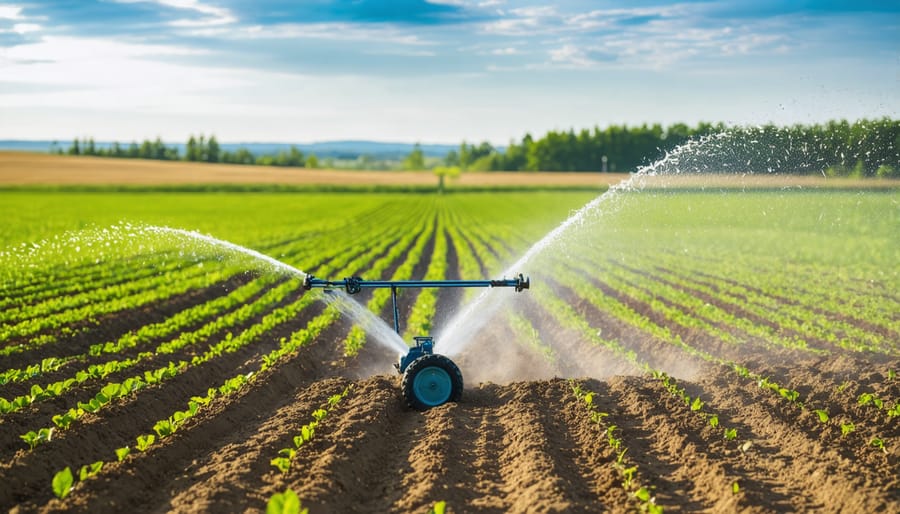
Soil Management for Water Conservation
Effective soil management is your first line of defense against groundwater depletion. Here in Alberta, many farmers have successfully reduced their irrigation needs by implementing smart soil management practices that boost water retention.
Cover cropping has proven particularly effective in our climate. By planting crops like clover or rye between main growing seasons, you’ll add organic matter to your soil while protecting it from moisture loss. Local farmer Mike Thompson from Lethbridge reported a 30% reduction in irrigation needs after implementing cover crops for just two seasons.
Reduced tillage or no-till farming practices help maintain soil structure and prevent moisture loss through evaporation. The natural decomposition of crop residue creates channels in the soil that improve water infiltration and storage. This approach has shown excellent results in both dryland and irrigated farming systems across southern Alberta.
Adding organic matter through composting or manure application increases your soil’s water-holding capacity. For every 1% increase in organic matter, soil can hold an additional 25,000 litres of water per hectare.
Consider implementing contour plowing and terracing on sloped land to slow water runoff and increase absorption. These techniques, combined with maintaining crop residue on fields, can reduce water requirements by up to 25% while protecting valuable topsoil from erosion.
Remember to regularly test your soil moisture levels to optimize irrigation timing and prevent overwatering. Many regional soil testing services can help you develop a targeted management plan for your specific conditions.
Crop Selection and Rotation Strategies
In Alberta’s changing climate, selecting the right crops and implementing smart rotation strategies can significantly reduce groundwater usage while maintaining farm productivity. Drought-resistant crops like chickpeas, lentils, and winter wheat have proven successful in water-limited conditions across the prairies. These crops develop deep root systems that access soil moisture more effectively and require less irrigation throughout the growing season.
Consider incorporating native prairie grasses into your rotation plan, as they’re naturally adapted to our local climate and soil conditions. Many Alberta farmers have found success with a three-year rotation system that includes a drought-resistant cereal crop, followed by a pulse crop, and then a soil-building cover crop.
Local success stories include the Morrison family farm near Lethbridge, who reduced their water usage by 30% after switching to drought-resistant varieties and implementing precision irrigation. They combine short-season crops with longer-maturing varieties to spread out water demand throughout the growing season.
When planning your rotation, consider these water-smart practices:
– Alternate deep-rooted and shallow-rooted crops
– Include cover crops to improve soil moisture retention
– Time plantings to maximize natural rainfall periods
– Group crops with similar water needs together for efficient irrigation
Remember to monitor soil moisture levels regularly and adjust your rotation plan based on seasonal forecasts and changing groundwater conditions. Working with local agricultural extension services can help you fine-tune your crop selection for optimal water efficiency.
Community-Based Water Management
Local Success Stories
The Lethbridge County Water Stewardship Initiative has become a shining example of community-driven groundwater management. Since 2018, local farmers have reduced groundwater consumption by 25% through the implementation of precision irrigation systems and crop rotation strategies. The project, led by fourth-generation farmer Sarah Thompson, demonstrates how traditional farming wisdom can combine with modern technology to achieve sustainable outcomes.
In the Red Deer region, the Collins Family Farm transformed their operation by installing soil moisture sensors across their 800-hectare property. Their smart irrigation system now saves approximately 40 million litres of groundwater annually while maintaining crop yields. “We’re not just preserving water for ourselves,” explains John Collins, “we’re securing it for the next generation of Alberta farmers.”
The Mountain View Aquifer Protection Program, involving 50 local farms, has successfully raised groundwater levels by 1.2 metres since 2019. Their approach combines reduced extraction with strategic recharge areas, where natural vegetation helps rainwater penetrate back into the aquifer. The program’s success has inspired similar initiatives across central Alberta.
These local victories show that sustainable groundwater management isn’t just possible – it’s already happening in our communities. By sharing these success stories and the practical methods behind them, Alberta farmers are leading the way in responsible water stewardship while maintaining productive agricultural operations.
Building Resilient Water Communities
Building resilient water communities starts with bringing neighbours together to develop shared solutions. In Alberta, successful community-based water conservation programs often begin with informal gatherings where farmers can openly discuss their water challenges and share traditional knowledge.
Consider establishing a local water stewardship group that meets regularly to monitor groundwater levels, share conservation strategies, and coordinate irrigation schedules. The County of Lethbridge’s Water Conservation Partnership serves as an excellent example, where farmers reduced water usage by 25% through collaborative planning and shared monitoring systems.
Practical steps for building your water community include:
– Organizing monthly meetings with neighbouring farms to discuss water management
– Creating a shared digital platform for tracking water usage and rainfall data
– Developing emergency response plans for drought periods
– Establishing equipment-sharing programs for water-efficient irrigation systems
– Coordinating with local conservation authorities for technical support
Many Alberta communities have found success by partnering with agricultural extension services to provide water management workshops. These educational sessions help farmers learn about new conservation technologies while strengthening community bonds.
Remember to celebrate conservation victories, no matter how small. The Wheatland County’s annual Water Wise Awards have effectively motivated farmers to adopt innovative water-saving practices while fostering healthy competition among neighbours.
As stewards of the land, we all share the responsibility of protecting our precious groundwater resources. The time to act is now, and every farm in Alberta can make a meaningful difference. By implementing water-efficient irrigation systems, monitoring well levels, and participating in local watershed management programs, we’re not just preserving water for our operations – we’re securing it for future generations of farmers.
Join your local agricultural association, share successful conservation practices with neighbours, and engage with conservation authorities. Remember, small changes on individual farms create significant impacts across our agricultural community. Together, we can maintain healthy groundwater levels while sustaining productive farms. Let’s make groundwater conservation a priority in our daily farming practices and build a resilient agricultural future for Alberta.

